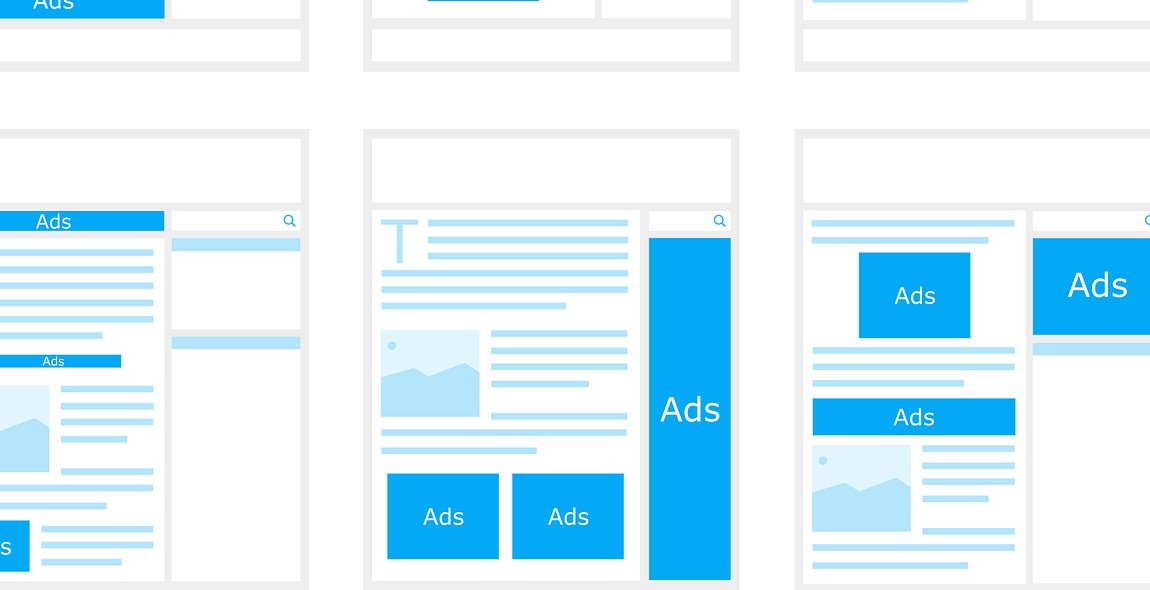How to Start a Blog: Step-by-Step Guide to Launching Your Own Blogging Platform
Are you interested in starting your own blog? Whether it’s for personal or professional reasons, blogging can be a great way to share your thoughts, ideas, and experiences with the world. However, getting started can seem overwhelming, especially if you’re new to the world of blogging.
That’s where this step-by-step guide comes in. In this article, I’ll walk you through everything you need to know to launch your own blogging platform. From choosing a niche to selecting a platform, writing your first post to promoting your content, I’ll cover all the essential steps to help you get started on the right foot.
Why Start a Blog?
There are many reasons why you might want to start a blog. Perhaps you’re looking to share your passion for a particular hobby or interest, or maybe you want to establish yourself as an authority in your industry. Or, maybe you just want a creative outlet to express your thoughts and ideas. Whatever your reasons, blogging can be a great way to achieve your goals.
What You’ll Need to Get Started
Before you start your blog, there are a few things you’ll need to have in place. These include:
- A niche or topic for your blog
- A domain name
- Web hosting
- A blogging platform
- A content strategy
Don’t worry if you’re not sure what all of these things are yet. I’ll explain everything in detail as we go along.
Choose a Niche: Define Your Blog’s Purpose
Before you start a blog, it’s essential to choose a niche. A niche is a specific topic or area of interest that your blog will focus on. Choosing a niche will help you create content that is relevant and valuable to your target audience, and it will also help you stand out from the competition.
When choosing a niche, it’s essential to define your blog’s purpose. Ask yourself, why do you want to start a blog? What do you want to achieve with your blog? Do you want to share your knowledge or expertise on a particular topic? Do you want to promote a product or service? Or do you want to make money through affiliate marketing or advertising?
Defining your blog’s purpose will help you narrow down your niche and create a clear direction for your blog. It will also help you stay motivated and focused on your goals.
Identify Your Target Audience
Once you have defined your blog’s purpose, the next step is to identify your target audience. Your target audience is the group of people who will be interested in your blog’s content. They are the ones who will read, share, and engage with your blog.
Identifying your target audience will help you create content that resonates with them. You can use tools like Google Analytics, social media insights, and surveys to gather information about your audience’s demographics, interests, and behavior.
When identifying your target audience, consider their age, gender, location, education, income, and lifestyle. Also, think about their pain points, goals, and aspirations. Understanding your audience’s needs and desires will help you create content that addresses their problems and provides solutions.
Conclusion
Choosing a niche and identifying your target audience are crucial steps in starting a successful blog. Defining your blog’s purpose will help you create a clear direction for your blog, while identifying your target audience will help you create content that resonates with them. By choosing the right niche and targeting the right audience, you can create a blog that stands out from the competition and attracts a loyal following.
Select a Blogging Platform
Choosing the right blogging platform is one of the most important decisions you will make when starting a blog. There are many free and paid blogging platforms available, each with its own set of advantages and disadvantages. In this section, we will discuss the most popular blogging platforms and help you decide which one is right for you.
Free Blogging Platforms
If you’re just starting out and don’t want to spend any money on a blogging platform, then a free blogging platform might be the best option for you. Here are some of the most popular free blogging platforms:
- WordPress.com: WordPress.com is a free blogging platform that is easy to use and offers a variety of customization options. It also has a large community of users who can help you with any questions you may have.
- Blogger: Blogger is a free blogging platform owned by Google. It’s easy to use and has a variety of templates to choose from.
- Tumblr: Tumblr is a microblogging platform that allows you to share short posts, photos, and videos. It’s easy to use and has a large community of users.
Advantages of Free Blogging Platforms
| Advantages | Disadvantages |
|---|---|
| Free | Limited customization options |
| Easy to use | Less control over your blog |
| Large communities of users | Less professional appearance |
Free blogging platforms are a great option if you’re just starting out and don’t want to spend any money on a blogging platform. They’re easy to use and have a large community of users who can help you with any questions you may have. However, they do have some limitations when it comes to customization options and control over your blog.
Paid Blogging Platforms
If you’re serious about blogging and want more control over your blog, then a paid blogging platform might be the best option for you. Here are some of the most popular paid blogging platforms:
- WordPress.org: WordPress.org is the self-hosted version of WordPress. It offers complete control over your blog and a wide range of customization options. However, you will need to purchase hosting and a domain name.
- Squarespace: Squarespace is a website builder that offers a variety of templates and customization options. It’s easy to use and offers a professional appearance.
- Wix: Wix is another website builder that offers a variety of templates and customization options. It’s easy to use and offers a professional appearance.
Advantages of Paid Blogging Platforms
| Advantages | Disadvantages |
|---|---|
| Complete control over your blog | Costs money |
| Wide range of customization options | May require technical knowledge |
| Professional appearance | May require additional expenses such as hosting and domain name |
Paid blogging platforms offer complete control over your blog and a wide range of customization options. They also offer a professional appearance, which can be important if you’re using your blog for business purposes. However, they do require a financial investment and may require some technical knowledge.

Domain Name and Web Hosting
Choosing a domain name and selecting web hosting are two of the most critical decisions you will make when starting a blog. Your domain name is your online identity, and your web hosting is the foundation of your blog. Let’s explore these two topics in more detail:
Choosing a Domain Name
Your domain name is the first thing people will see when they visit your blog. It’s crucial to choose a domain name that is memorable, easy to spell, and relevant to your niche. Here are some tips to help you choose a domain name:
- Make it easy to spell and remember
- Avoid using numbers and hyphens
- Keep it short and sweet
- Choose a name that reflects your niche
- Consider using your name if you’re building a personal brand
Once you’ve come up with a few domain name ideas, you can use a domain name registrar like GoDaddy or Namecheap to check if they’re available. If your domain name is available, you can purchase it for a yearly fee.
Selecting Web Hosting
Your web hosting is the foundation of your blog. It’s where all your files, images, and content will be stored. When selecting web hosting, there are a few things you should keep in mind:
- Uptime Guarantee: Look for a hosting provider that guarantees at least 99% uptime.
- Speed: Choose a hosting provider that has fast server response times.
- Customer Support: Make sure your hosting provider has excellent customer support.
- Scalability: Look for a hosting provider that can grow with your blog.
- Security: Choose a hosting provider that takes security seriously.
There are many web hosting providers to choose from, including Bluehost, HostGator, and SiteGround. These providers offer a range of hosting plans to suit different needs and budgets. When selecting a plan, consider your blog’s size, traffic, and budget.
| Web Hosting Provider | Starting Price | Uptime Guarantee | Customer Support |
|---|---|---|---|
| Bluehost | $2.95/month | 99.9% | 24/7 Live Chat, Phone, Email Support |
| HostGator | $2.75/month | 99.9% | 24/7 Live Chat, Phone, Email Support |
| SiteGround | $6.99/month | 99.9% | 24/7 Live Chat, Phone, Email Support |
Once you’ve chosen a web hosting provider, you can sign up for a plan and connect your domain name to your hosting account. Your hosting provider will provide you with instructions on how to do this.

Design and Customize Your Blog
After selecting a blogging platform and setting up your blog, it’s time to design and customize your blog to make it visually appealing and user-friendly. Here are some steps to follow:
Selecting a Theme
A theme is the overall design and layout of your blog. It determines the look and feel of your blog and how your content is presented to your readers. When selecting a theme, consider the following:
- Responsive design: Ensure that the theme is responsive so that it can be viewed on different devices such as smartphones, tablets, and desktops.
- User-friendly: Choose a theme that is easy to navigate and user-friendly. Avoid themes that are cluttered or have too many graphics.
- Customizable: Look for a theme that is customizable so that you can make changes to the design and layout to match your brand and style.
- SEO optimized: Choose a theme that is SEO optimized so that your blog can rank higher in search engines.
There are many free and paid themes available for blogging platforms like WordPress and Blogger. You can browse through the themes and select the one that best suits your needs.
Customizing Your Blog
Once you have selected a theme, it’s time to customize your blog to make it unique and visually appealing. Here are some steps to follow:
- Logo and branding: Add your logo and branding to your blog to make it easily recognizable and memorable.
- Header and footer: Customize your header and footer to include your blog’s name, tagline, and social media links.
- Color scheme: Choose a color scheme that matches your brand and style. Use colors that are easy on the eyes and complement each other.
- Fonts: Select fonts that are easy to read and match your brand. Avoid using too many different fonts.
- Widgets and plugins: Add widgets and plugins to your blog to enhance its functionality and user experience. Some examples include social media sharing buttons, email subscription forms, and related posts.
- Optimize for SEO: Ensure that your blog is optimized for SEO by including relevant keywords in your content, using meta descriptions, and optimizing your images.
Customizing your blog is an ongoing process, and you can make changes and updates as you go along. The key is to create a visually appealing and user-friendly blog that reflects your brand and style.

Create Quality Content
One of the most important aspects of starting a successful blog is creating high-quality content that resonates with your audience. Here are some tips to help you develop content ideas and craft your first post:
Developing Content Ideas
Before you start writing, it’s important to have a clear idea of what your blog will be about. Here are some strategies for developing content ideas:
- Identify your niche: What topics are you passionate about? What are your areas of expertise? What unique perspective can you bring to the table?
- Research your audience: Who are your target readers? What are their pain points and interests? What questions do they have that you can answer?
- Brainstorm ideas: Use tools like mind mapping and brainstorming to generate a list of potential topics and angles.
- Stay up to date: Stay on top of industry news and trends to ensure your content is timely and relevant.
Crafting Your First Post
Your first post is your chance to make a strong first impression on your audience. Here are some tips for crafting a killer first post:
- Choose a compelling topic: Your first post should be something that grabs your readers’ attention and sets the tone for the rest of your content.
- Create a strong headline: Your headline should be clear, concise, and attention-grabbing.
- Write an engaging introduction: Your introduction should hook your readers and make them want to keep reading.
- Provide value: Make sure your post provides value to your readers. What will they learn or gain from reading your content?
- Use visuals: Incorporate images, videos, and other visuals to make your post more engaging and shareable.
- End with a call to action: Encourage your readers to engage with your content by leaving a comment, sharing on social media, or subscribing to your blog.
By following these tips and staying committed to creating quality content, you can build a successful blog that resonates with your audience and stands out in a crowded online space.

Promote Your Blog: How to Get Your Content Seen
Starting a blog is just the first step. Once your blog is up and running, the next step is to promote your content. Without promotion, your blog will not reach its full potential. There are many ways to promote your blog, but in this section, we will focus on two of the most effective methods: social media marketing and email marketing.
Social Media Marketing
Social media marketing is a powerful tool that can help you reach a wider audience. By promoting your blog on social media platforms like Facebook, Twitter, and Instagram, you can increase your blog’s visibility and attract new readers.
When promoting your blog on social media, it’s important to keep a few things in mind:
- Choose the right platforms: Not all social media platforms are created equal. Choose the platforms that are most popular with your target audience.
- Create engaging content: Your social media posts should be engaging and informative. Use eye-catching images and headlines to grab your audience’s attention.
- Be consistent: Consistency is key when it comes to social media marketing. Post regularly to keep your audience engaged.
- Engage with your audience: Social media is a two-way conversation. Respond to comments and messages to build relationships with your audience.
By following these tips, you can effectively promote your blog on social media and attract new readers.
Email Marketing
Email marketing is another effective way to promote your blog. By sending regular newsletters to your subscribers, you can keep them up-to-date with your latest blog posts and encourage them to visit your site.
When using email marketing to promote your blog, it’s important to keep a few things in mind:
- Build your email list: The success of your email marketing campaign depends on the size of your email list. Encourage your readers to sign up for your newsletter by offering exclusive content or discounts.
- Create engaging content: Your newsletter should be engaging and informative. Use eye-catching images and headlines to grab your readers’ attention.
- Be consistent: Consistency is key when it comes to email marketing. Send your newsletter regularly to keep your subscribers engaged.
- Personalize your emails: Personalization can increase the effectiveness of your email marketing campaign. Use your subscribers’ names and tailor your content to their interests.
By following these tips, you can effectively promote your blog through email marketing and keep your subscribers engaged.
| Method | Pros | Cons |
|---|---|---|
| Social Media Marketing | – Reach a wider audience – Engage with your audience – Increase your blog’s visibility |
– Can be time-consuming – Requires consistent effort – Algorithm changes can affect reach |
| Email Marketing | – Keep your subscribers engaged – Encourage repeat visits – Personalization can increase effectiveness |
– Requires a large email list – Can be time-consuming – Emails can end up in spam folder |
Both social media marketing and email marketing are effective ways to promote your blog. By using these methods, you can increase your blog’s visibility, attract new readers, and keep your subscribers engaged.

Monetize Your Blog
One of the most exciting aspects of starting a blog is the potential to earn money from it. While it can take time and effort to build up a following and start generating revenue, there are several ways to monetize your blog.
Advertising and Sponsorship
One of the most common ways to make money from your blog is through advertising and sponsorship. This involves partnering with companies or brands that are relevant to your niche and promoting their products or services to your audience. There are two primary types of advertising and sponsorship:
- Display advertising: This involves placing banner ads or other types of display ads on your blog. You can work with ad networks like Google AdSense or Mediavine to place these ads on your site.
- Sponsored content: This involves creating blog posts or other types of content that are sponsored by a brand or company. You will typically be paid a fee for creating this content and promoting it to your audience.
When it comes to advertising and sponsorship, it’s important to be transparent with your readers. Be sure to disclose any sponsored content or affiliate links in your posts so that your readers know that you are being compensated for promoting certain products or services.
Affiliate Marketing
Affiliate marketing is another popular way to make money from your blog. This involves promoting other people’s products or services and earning a commission for any sales made through your unique affiliate link. There are several affiliate networks you can join, such as Amazon Associates or ShareASale, or you can work directly with companies that offer affiliate programs.
When it comes to affiliate marketing, it’s important to only promote products or services that you truly believe in and that are relevant to your audience. Be sure to disclose any affiliate links in your posts so that your readers are aware that you may earn a commission if they make a purchase through your link.
| Pros | Cons |
|---|---|
| Can be a lucrative way to earn passive income | Can be time-consuming to find and manage partnerships |
| Allows you to monetize your blog without creating your own products | Readers may become skeptical if they feel like you are promoting too many products or services |
Overall, there are several ways to monetize your blog, and it’s important to find the methods that work best for you and your audience. Whether you choose to focus on advertising and sponsorship, affiliate marketing, or a combination of both, the key is to provide value to your readers and build a loyal following over time.
Conclusion
Starting a blog can be an exciting and fulfilling experience. It allows you to share your thoughts, ideas, and expertise with the world and connect with like-minded individuals. With this step-by-step guide, you can launch your own blogging platform and start creating content that resonates with your audience.
Remember these key takeaways:
- Choose a niche that you are passionate about and that has an audience.
- Select a blogging platform that suits your needs and budget.
- Create a domain name and hosting account.
- Customize your blog’s design and layout to reflect your brand.
- Start creating high-quality content that provides value to your readers.
- Promote your blog through social media, email marketing, and other channels.
- Engage with your audience and build a loyal following.
While starting a blog may seem daunting at first, with the right approach and mindset, you can create a successful platform that generates traffic, revenue, and recognition. Remember to stay consistent, stay true to your voice and vision, and always strive to improve your skills and knowledge.
| Author: | John Doe |
| Date Published: | June 1, 2021 |
| Category: | Blogging |
